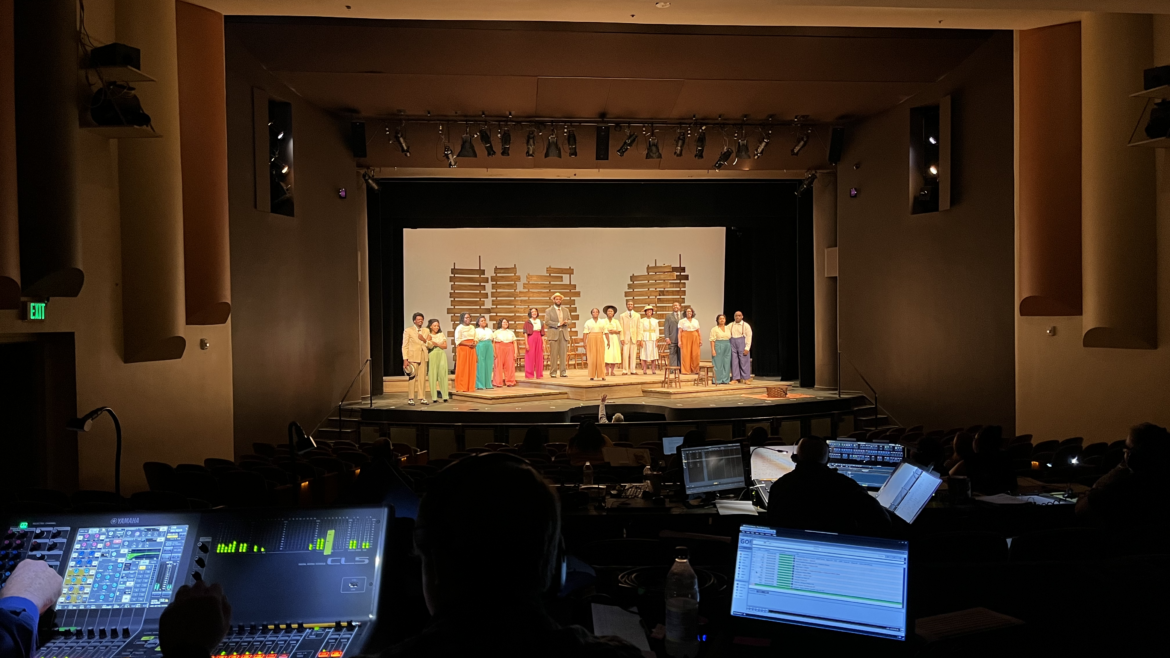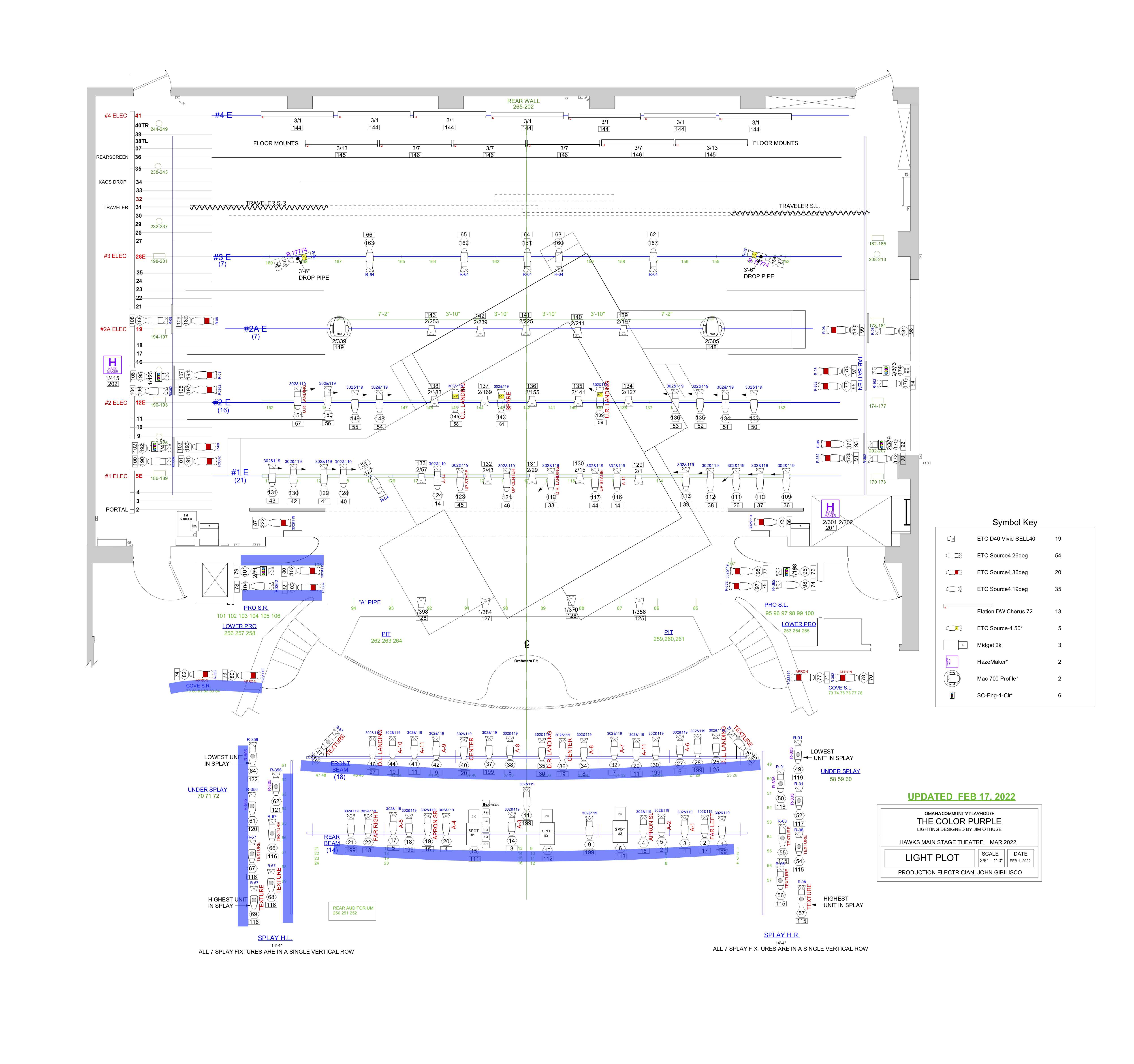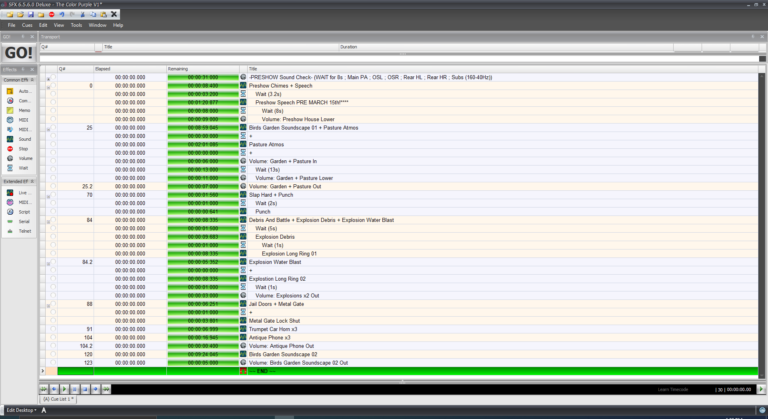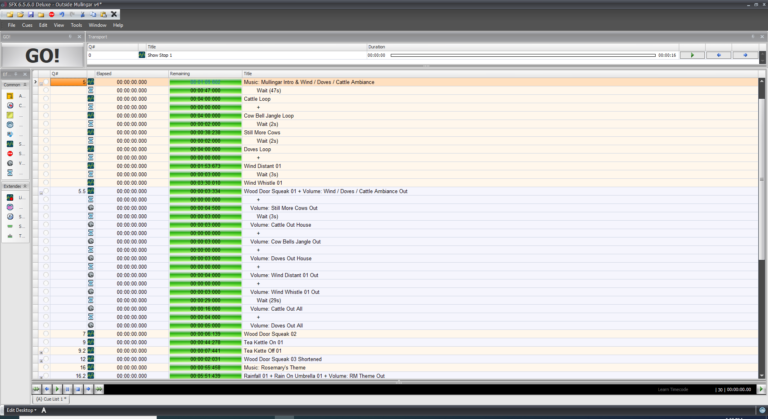This Mortal Life Also
This Mortal Life Also https://okcoffman.com/wp-content/uploads/2022/04/IMG_1919-1024x768.png 1024 768 OK Coffman https://secure.gravatar.com/avatar/ce257a4bd4f931f5d12f40452adc1568?s=96&d=mm&r=gSound Designer and Composer
- The first group of examples are two compositions that show how I separated different elements within one piece and played them through different speakers around the stage to create space and dimensionality. The example at the top of the list is a recreation of all three layers played at once as they were during the show. Though I can’t recreate the effect for these demos, I did at least place the tracks between your left and right ear to approximate where the speakers were placed within the space. Below are the three tracks separated so you can hear what would be coming out of each area on stage at a given time. Finally, there is another transition from the show with more layers stacked on top of each other, panned again to roughly represent speaker placement.
Transition Example 01 With All 3 Layers (Panned to Approximate Speaker Placement):
Layer 01 (Main Layer, from Main PA overhead):
Layer 02 (Original layer blurred with reverb, from onstage floor monitors):
Layer 03 (Countermelody, from floor and overhead monitors):
Transition Example 02 (Panned to Approximate Speaker Placement):
- The director, playwright, and I decided to utilise solo piano compositions throughout most of the show, since the character in focus was a skilled pianist and raised in a musical household. Although some pieces had the piano stand alone (displayed next), I wanted to fill out the space for some of the transitions that were feeling empty. To do that without compromising the artistic concept of a single piano, I used these more ‘reflective’ layers to act as a call and response between our lead and the tone of things like his country, the church, and his own beliefs.
- These three pieces are some of the compositions that were slightly stripped back compared to the heavily effected examples above. Generally, those were reserved for scene transitions, while these examples came at critical moments in the play, such as Bows, Act I to Intermission, and Top of Act II (Listed in order of appearance).
- Finally, these last three sound effects show some ambient and transitional sounds I was tasked with capturing during the show to reinforce different settings. As many of the sets used the same pieces rearranged, Dan Stratman (Lighting Designer) and I helped to create even greater contrast by re-lighting the cyc and adding different environmental noises respectively. For this demonstration I placed the sounds being sent to the onstage speaker in your left ear and the mains in your right. Though it is still not a perfect recreation, you can hear each elements separately and understand how placing these in different parts of the stage would create dimension.
London Bell Toll (2 Speakers Panned to the Left and Right Ear):
Outdoor Ambiances:
Show: This Mortal Life Also
Company: Angles Theatre Company
Playwright: Nancy Shank
Director: Timothy Scholl
Asst Director: Mason Morrill
Stage Manager: Stephanie Kahler
Technical Director: Michael Fortkamp
Set Designer: Jamie Bullins
Costume Designer: Jenny Pool
Lighting Designer: Dan Stratman
Dramaturge: Rhiannon Ling
This brand-new show by playwright Nancy Shank allowed me to work on the world premier of a relevant and thought-provoking piece. I was left in charge of the aural elements in the show, which ranged from ambient sounds to long transitional pieces. Additionally, I was able to apply my audio engineering skills to assemble a multichannel system allowing for more immersive sound, with audio coming from multiple locations in the theatre. This included wedge speakers onstage as well as overhead channels in addition to the Main PA. This was one of my favorite shows to work on thus far and I am proud of the work we produced with this team!





























